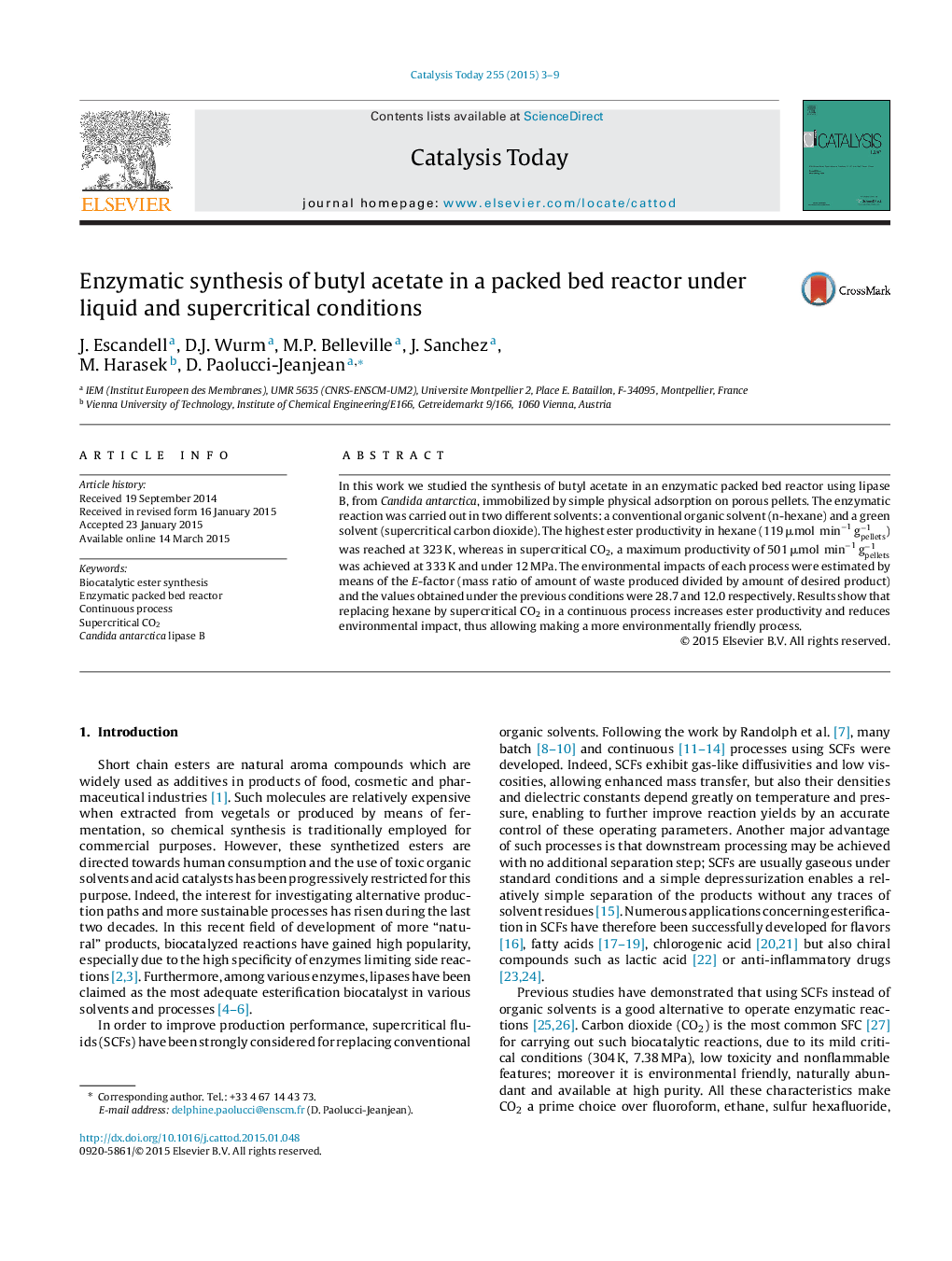| Article ID | Journal | Published Year | Pages | File Type |
|---|---|---|---|---|
| 53759 | Catalysis Today | 2015 | 7 Pages |
•Synthesis of butyl acetate in an enzymatic packed bed reactor was investigated.•Performance was higher when working under supercritical CO2 than when using hexane as solvent.•With SC CO2, the maximum productivity was 508 μmol min−1 gpellets−1 (333 K, 12 MPa).
In this work we studied the synthesis of butyl acetate in an enzymatic packed bed reactor using lipase B, from Candida antarctica , immobilized by simple physical adsorption on porous pellets. The enzymatic reaction was carried out in two different solvents: a conventional organic solvent (n-hexane) and a green solvent (supercritical carbon dioxide). The highest ester productivity in hexane (119 μmol min−1 gpellets−1) was reached at 323 K, whereas in supercritical CO2, a maximum productivity of 501 μmol min−1 gpellets−1 was achieved at 333 K and under 12 MPa. The environmental impacts of each process were estimated by means of the E-factor (mass ratio of amount of waste produced divided by amount of desired product) and the values obtained under the previous conditions were 28.7 and 12.0 respectively. Results show that replacing hexane by supercritical CO2 in a continuous process increases ester productivity and reduces environmental impact, thus allowing making a more environmentally friendly process.
Graphical abstractFigure optionsDownload full-size imageDownload high-quality image (95 K)Download as PowerPoint slide
